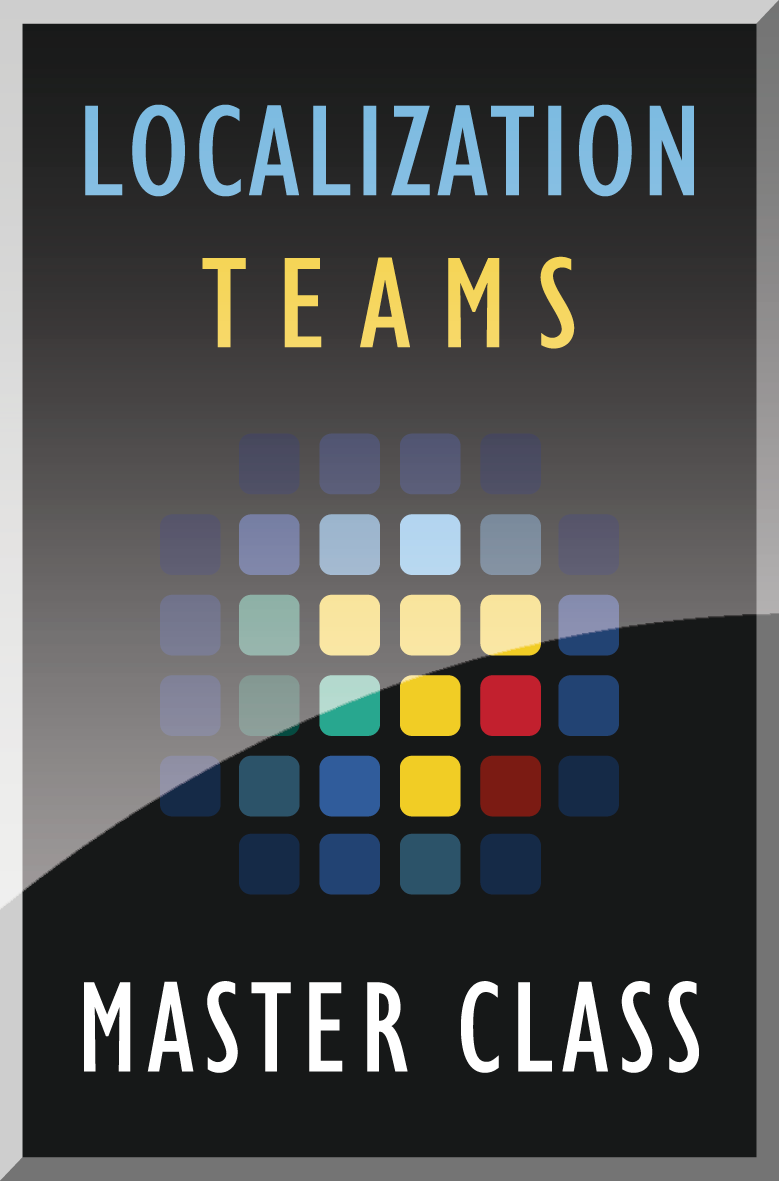Approaching Inclusion Through Psychological Safety: Ideas for Localization Teams

When I teach the Localization Teams Master Class, I often think about how management principles apply in particular to Localization. Localization teams are often both dispersed and culturally diverse, and helping team members feel included is often a challenge for leaders.
For some new ideas and to broaden my perspective, I turned to my friend Minette Norman, co-author of The Psychological Safety Playbook: Lead More Powerfully by Being More Human and a former localization leader at Autodesk.

Mimi Hills: What is psychological safety, and why do you think it is important for localization teams?
Minette Norman: I truly believe that psychological safety is the foundation of inclusive teams and that means inclusive to all aspects of diversity, including multicultural teams. The reason it’s so important is that everyone has a unique perspective to add; they have unique skills, they have unique life experiences, and they have different ways of thinking. If we can tap into that collective genius—all the ways in which we think differently and have different backgrounds—if we can tap into that, we will have better business results, we will have more engaged teams, people will enjoy working together more, and we will be more innovative.
Mimi: How does that work in practice?
Minette: It doesn’t happen unless people feel that they can actually bring their unique perspective, their unique voice, or an experience that they’ve had. I’ve certainly known over the many years of managing international teams that different cultures have different styles of communication. In some cultures, it’s not okay to challenge authority or challenge the status quo. You wait to speak until you’re asked to speak in many cultures. We in the U.S. culture jump all over each other; a lot of European cultu
res are like that too, where you’re quick to jump on each other’s words and interrupt one other. In several Asian cultures that is not okay. What you notice in meetings is that maybe the people from Japan, China, Singapore, and elsewhere are just not participating. And you come to this erroneous conclusion that they have nothing to say, or that they are just in the background and happy to be in the background. But that is not the case. They are waiting, perhaps, for an invitation to speak, because in their culture that’s what’s acceptable, and you wouldn’t interrupt each other.
Mimi: I’ve seen this myself. When did you first start thinking about this?
Minette: One of the most eye-opening moments for me—because I was based in the U.S., I was in the Autodesk headquarters, and before I took over leading Localization I was one of the senior managers in the Globalization team, and I usually sat at the headquarters in the staff meeting. One time I was on a business trip to our office in Switzerland, and I was with the managers there. We called in for a staff meeting. I think there were three of us senior managers there, and we couldn’t hear what was being said because they were having side conversations. And what they did was they put the room on mute and they had their own side conversation. And I realized, “there are two totally different meetings going on!” They’re not even participating. That was my “aha moment” of realizing what a terrible experience it is being in a non-U.S. office. Even though we were all on the same level in terms of our seniority, they were not included half the time because of all the side conversations and quiet voices.
It was a moment when my eyes were opened. From then on when there was a side conversation, I would stop the side conversations in the room, and I would say, “The people on the phone are not going to be able to hear us. Let’s have one conversation.” I was basically being the inclusion police because I noticed people were being excluded and left out.

Mimi: Tell us a little about the book. Where did the first spark come from?
Minette: The book started when my co-author, Dr. Karolin Helbig, heard me say that there seems to be a lot of academic research about psychological safety and why it’s important, but there’s very little practical information for leaders and managers who believe in psychological safety but don’t know what to do to improve it.
It’s a short book by design, because we both read a lot of business books and know that often you don’t get through them when they are too long. We wanted it to be extremely accessible, very usable, and also that you could drop in and out if it anywhere in the book and find something useful without having to read it all. We have divided it into five main plays, and each play has five moves under it. So, there are twenty-five practical tips for how to increase psychological safety. And Karolin illustrated it with very fun, simple illustrations.
Mimi: You’re very passionate about this. What makes psychological safety so important?
Minette: What is so important about psychological safety is that we acknowledge that we want to create the conditions where everyone can speak up and there are no ramifications for having a different perspective; in fact, we invite that other perspective. One of the things we’ve included in the book are some inclusive rituals that you can institute in your team. One of the things I’ve tried out in a meeting is turn-taking, where you actually deliberately say that no one speaks twice until everyone speaks once. And you let people know in advance so they have time to prepare. If English is not your first language or you’re an introvert, or you’re not a dominant personality, you need time to prepare. And so, if you’re put on the spot in a meeting you’re not necessarily comfortable, but if you’re given an assignment like “we are all going to discuss this topic, come prepared, have two minutes of your thoughts prepared, then we’re going to go around the virtual table and everyone’s going to share their thoughts.” That’s a way to hear all the voices, give people time to process.
Mimi: What other aspects of psychological safety can be applied to the localization team, where we typically have people from so many cultures?
Minette: I’ve been trying to find research on psychological safety in different cultures. It’s not clear that there’s anything out there. So much has been done in the U.S. and Western cultures. I have been talking to people in different countries about their own experiences, and it’s really not straightforward. The starting point is to acknowledge we have cultural differences, we don’t all feel comfortable operating in the same way, and let us find ways that make it easier for everyone from every culture and every personality to participate. And some of that is not in meetings; some of that is allowing offline, asynchronous work, such using as a whiteboarding tool where people can add their ideas in their own time when they can be quiet and think alone, then find a way to discuss it when they can come back together. All of these things are things we need to get better at, because not everyone is the big, dominant personality that wants to speak up in a virtual or physical meeting.
The other thing that Is important, especially with different cultures around the globe, is that in a psychologically safe environment, it’s okay to challenge an idea. That can be your manager’s or your VP’s or the CEO’s idea, and we need to create the conditions where that’s okay. Especially in hierarchical cultures, that’s very hard, even taboo in some places. How can we as leaders try to make that less of a threat, and less of a scary proposition, so as a leader I really do want to hear your perspective, and to invite that. A lot of the work we have in the book is inviting leaders to mine for dissent.
Mimi: I love the term “mining for dissent.”
Minette: We don’t do it a lot. We don’t do that because we like people to agree with us. We need for people to say, “Have you thought about such and such?” or “Maybe you’ve missed such and such.” Unless we ask for that, we don’t get it, because it’s uncomfortable to challenge our boss or our boss’s boss or even someone who just feels they have some positional power.
Mimi: Is there anything else you can think of that really pertains to globalization teams, either because of being global, dispersed, or speaking different native languages?
Minette: Language comes to mind for me, both in a positive and a challenging way. The first thing is that by nature with globalization teams you have people who have many different languages, so English is rarely the first language for your team members. I learned to find different ways to make sure people are understanding one other. One of the best tools that is available to us now that wasn’t available to us a few years ago is closed captioning. What often happens in having a second language is that my comprehension is better when I can see the words, not just hear the words. That’s true for many people for whom English is not their first language. So always turn on the closed captioning by default, and make sure people know that’s available to them because that helps everybody understand better. That can be hard because in the U.S. we’re using a lot of slang and terminology and we’re assuming everyone gets it, and they don’t. How could they when this is their second, third, fourth language? When we learn a foreign language, we don’t know all the slang and terminology, and the way you speak in vernacular—why would anyone know that? To assume is just unfair.
We need to level the playing field. One of the ways to think about that is to not have people together in a room—put everyone on Zoom. People don’t want to do that, especially if they’ve managed to come into the room together. One of the things we have in the book, and I recommend in general, is that you appoint someone in the room to be what we call the “inclusion booster,” or facilitator. If you have a hybrid meeting, or actually any meeting, it’s good to appoint someone and rotate the role—and say you’re in charge of making sure that everyone has an equitable and inclusive experience in the meeting, whether you’re in the room or remote. So turn taking, calling on the quiet people, looking for other ways to engage like monitoring the chat, say “put it in the chat and I will be your voice.” Otherwise, the people in the room are going to be having the conversations and the people online will be saying do I raise my hand, do I say something—no it’s easier to sit back and be quiet. And their voice won’t be heard, and they have an important voice.
Mimi: Do you have any other tips for hybrid teams, with people working from home and the office?
 Minette: Hybrid can be very tricky unless we are very deliberate about how we set things up. In the pre-pandemic days, you often had the people in the room in headquarters, and then you had the people around the globe, and there was an “us and them” thing. If you’re in the room you can have the casual aside or joke, and people on the phone aren’t even hearing what’s going on in the room. In hybrid situations we have to be super-deliberate that the people who are in a physical location together are not having a safer, more comfortable, more fun, more inviting experience than the people who are remote.
Minette: Hybrid can be very tricky unless we are very deliberate about how we set things up. In the pre-pandemic days, you often had the people in the room in headquarters, and then you had the people around the globe, and there was an “us and them” thing. If you’re in the room you can have the casual aside or joke, and people on the phone aren’t even hearing what’s going on in the room. In hybrid situations we have to be super-deliberate that the people who are in a physical location together are not having a safer, more comfortable, more fun, more inviting experience than the people who are remote.
Mimi: Now that you’re an inclusive leadership consultant and speaker, what do you look back on and remember about localization teams?
Minette: On the positive side, the fact that you as a globalization leader have people from all different cultures, who speak all these different languages—it’s a gift that you have, in that you by nature have diverse perspectives, diverse cultures, diverse ways of looking at the world, and that should help your products be better. Not just your localized products but your products in general. One of the things I always thought, when I was leading the localization team at Autodesk, is that we don’t tap into our globalization team members beyond having them do the localization work. They could make our products so much better because they live in different parts of the world, they experience the world differently through language and culture and geography. I think there’s so much untapped power there, that our product teams and our designers could tap into. Do you think that too?
Mimi: I’ve often thought that team members in other countries should be usability testers for the product.
 Minette: I wish the teams weren’t so siloed. I would love to see globalization team members around the globe more involved in design and usability, avoiding some of the kinds of mistakes you see when products go into international markets. We should be asking how could we optimize this product for Japan, instead of saying we’ll kind of localize it. What would make it a killer app in Japan?
Minette: I wish the teams weren’t so siloed. I would love to see globalization team members around the globe more involved in design and usability, avoiding some of the kinds of mistakes you see when products go into international markets. We should be asking how could we optimize this product for Japan, instead of saying we’ll kind of localize it. What would make it a killer app in Japan?
Mimi: Thanks for all these great tips, Minette. I’m curious—how did you move from your roles in Localization to being such a well-regarded consultant and speaker in the inclusion field?
Minette: I got my start in tech as a technical writer. My first job in localization was at Autodesk, and I managed a team of engineers. And I gradually took on bigger roles in the Localization Department until I took on the whole team. I led Localization at Autodesk for about five years, and my charter was to transform how we localize products, and I did a lot of streamlining as to what we would keep inside, asking what is our value-add and what do we outsource. What we became known for was automating localization. We were early adopters of machine translation and MT with post-editing.
At Autodesk we were pushing the envelope because we had such high volumes. We were known for being innovative and very tech-savvy, and I really loved leading that. It was the fact that I was so successful at localization that I ended up being the VP of engineering practice.
I was in that VP role for about 5 years, and over time I became highly interested in helping women and underrepresented groups have a better work experience, because I was seeing that we weren’t. When I left, I realized that I wanted to help not just one company but many companies be more inclusive, and I felt that the big gap in inclusive leadership is that we don’t train managers, we don’t help our leaders understand what it means to create an inclusive environment with a strong foundation of psychological safety. And I decided that’s really going to be the focus of what I do in this phase of my career.
Mimi: Thank you very much for spending the time to speak with me today, Minette and for sharing your insights. Please tell us, when and where can we get our hands on this book?
Minette: It’s been a pleasure talking with you, Mimi. You can pre-order the book now on all the major online book sites, and it will be released on February 22.
The print and eBook versions of The Psychological Safety Playbook: Lead More Powerfully by Being More Human by Karolin Helbig and Minette Norman, are available for preorder now, and the audiobook narrated by Minette Norman, will be available close to the official publication date of February 22, 2023.
https://thepsychologicalsafetyplaybook.com/
Illustrations Copyright: © Karolin Helbig and Minette Norman, The Psychological Safety Playbook.
Disclaimer: Copyright © 2021 The Localization Institute. All rights reserved. This document and translations of it may be copied and furnished to others, and derivative works that comment on or otherwise explain it or assist in its implementation may be prepared, copied, published, and distributed, in whole or in part, without restriction of any kind, provided that the above copyright notice and this section are included on all such copies and derivative works. However, this document itself may not be modified in any way, including by removing the copyright notice or references to The Localization Institute, without the permission of the copyright owners. This document and the information contained herein is provided on an “AS IS” basis and THE LOCALIZATION INSTITUTE DISCLAIMS ALL WARRANTIES, EXPRESS OR IMPLIED, INCLUDING BUT NOT LIMITED TO ANY WARRANTY THAT THE USE OF THE INFORMATION HEREIN WILL NOT INFRINGE ANY OWNERSHIP RIGHTS OR ANY IMPLIED WARRANTIES OF MERCHANTABILITY OR FITNESS FOR A PARTICULAR PURPOSE.



